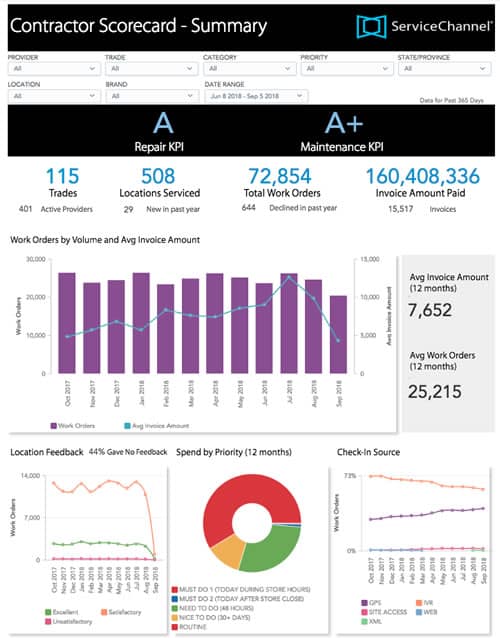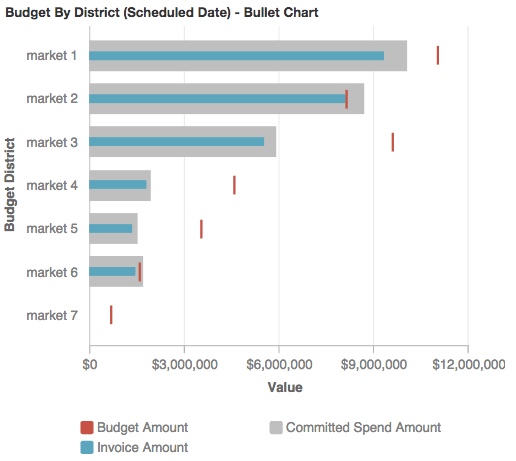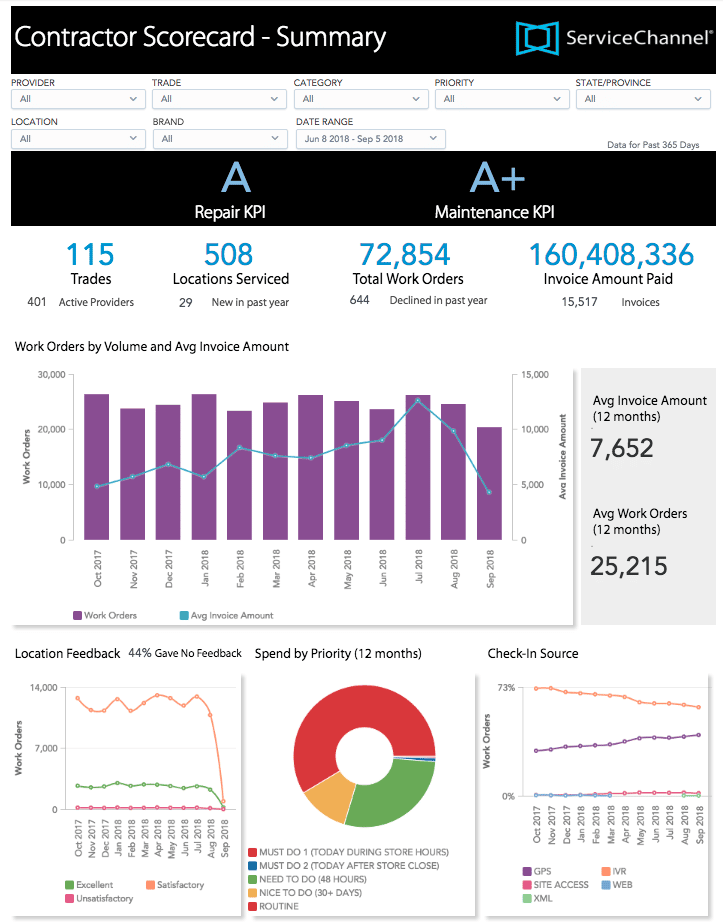How to Create Actionable Facilities Management Reports

For modern facilities managers, information is vital. Gone are the days when decisions were made on gut instincts; now, the key to making effective FM decisions is intelligent data. The problem is, many organizations struggle to use data strategically — in fact, a recent Forrester Research survey found that only 12% of organizational data is analyzed after it’s collected.
The first step toward strategic data use is integrating an analytics solution. With this in place, FM teams can quickly and easily uncover actionable insights from contractor and facility data points. These insights not only enable managers to make more informed decisions, but also communicate successes to upper management and external teams more effectively.
In addition to software adoption, there are several best practices FMs should heed in order to showcase accomplishments when it comes to reporting time. Let’s take a look:
Focus on Metrics That Matter to Your Audience
Ask yourself: Who is this report for? Will it be presented to departments like store operations, procurement or finance? Is it for internal use? Or will this report be going to upper management? The structure and content of your report depends heavily on the audience:
External Departments
Make sure to tailor your data points to the external department’s area of interest. Let’s look at two examples, the Store Operations team and the Procurement team:
Reporting metrics to focus on for the Store Operations team include:
- Which locations are receiving the most work orders
- Types of work orders, including what percentage are emergencies
- Repair and maintenance (R&M) spend by location
- R&M spend by asset
- R&M spend fluctuations over time
- Planned maintenance completion percentages
This data will help store operations determine if work order processes need updating to even out or reduce spend, improve efficiency or keep asset function optimal.
The Procurement team is most interested in service provider metrics, so give them reports featuring:
- Issue resolution times by contractor
- Contractor performance breakdown by trade and region
- Contract adherence to key performance indicators, including average length of open invoices
- Contractor compliance
Procurement teams typically need reports less frequently than other departments, so plan to present them required data on a quarterly or bi-yearly basis.
Internal FM Team
Your facilities team needs comprehensive asset and R&M information to make data-backed FM decisions, so include a lot of detail in internal reports. Really dig into specifics about each asset—how much they’re costing to maintain, how they’re functioning, which pieces have open work orders and what their R&M service histories look like.
There are analytics software tools that can help you draw actionable insights from asset intelligence data, giving your team the power to strategically weigh decisions like equipment repair versus replacement.
These types of tools also allow you to set key performance indicators (KPIs) like percentage of on-time contractor check-ins and -outs or first-time resolution rates, helping you track how your FM operations are performing and make adjustments if necessary.
Upper Management
C-level executives, VPs and Directors want reports that give them a clear picture of overall FM operations so that they can make smart, business-wide decisions. When creating reports for upper management, focus on metrics that illustrate the bigger picture—like total FM costs and savings—without digging into every small detail.
Be sure to include:
- Actual spend compared to given budget
- Repair and maintenance costs by location (cost per square foot)
- NTE exposure
- Total FM spend over time
- Spend by category
Decide on a Reporting Schedule
Reporting frequency also depends on the target audience. For instance, C-level executives typically find quarterly reporting most valuable. That way, they can understand performance and plan budgets without being inundated with data.
On the other hand, internal teams can benefit from more frequent reporting, since they need the data to make day-to-day decisions. If your department is in the midst of launching and evaluating a new initiative, it’s not uncommon to dig into report data even more frequently— perhaps weekly or even daily.
Illustrate Key Data Points With Visuals
Oftentimes, simply listing data is not enough to present a clear picture of FM performance over time. Use visuals like graphs, plots and charts to show data patterns and trends more effectively. When it comes to presenting reports, take advantage of visual aids to highlight key data points, such as FM spend, and how they compare to the previous year or quarter. The below example details budget allocation by district vs. invoice amounts for a given time period:

Create Reporting Dashboards
To make the process of turning disparate data into clear reports easier, create various dashboards for each report focus; for instance, you could have one dashboard for contractor performance data and another for repair and maintenance spend.
Here is an example of a contractor performance dashboard (a ‘contractor scorecard’):

You can also set your dashboards to alert you if there are any notable changes in your data or if you’re approaching a set limit, such as monthly budget. These alerts help you stay within necessary parameters and keep you up-to-date in between your regular reporting checks.
Final Thoughts
Consider one global retailer’s experience: challenged by limited data visibility and a lack of KPI measurement processes, the retailer decided to overhaul its FM reporting. It implemented an analytics platform, input measurable KPIs and created executive dashboards, resulting in streamlined reporting and organization-wide visibility. Through increased visibility and smart reporting, the retailer was able to achieve a 46% reduction in work order resolution time and an invoice savings of over 20%.
Prioritizing reporting processes can help your organization make smart decisions that will result in cost savings, improved efficiency, increased revenue and more.
Learn more about how to optimize your facilities management reports to support data-backed decision-making.




